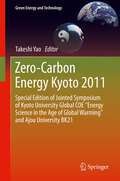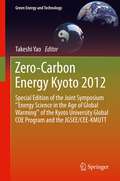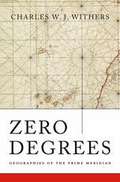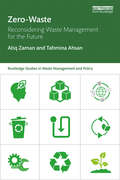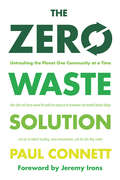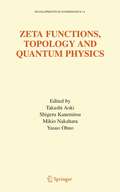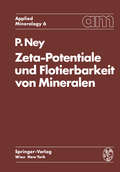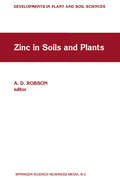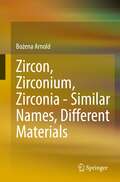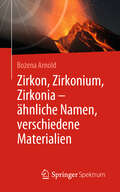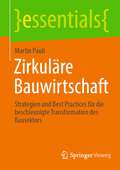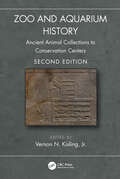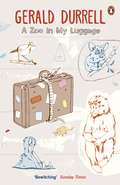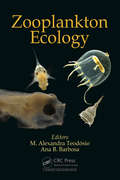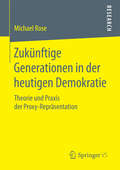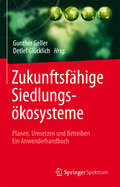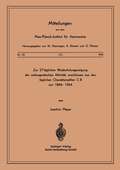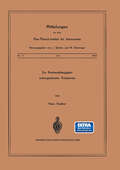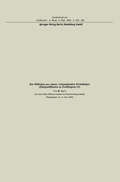- Table View
- List View
Zero-Carbon Energy Kyoto 2011: Special Edition of Jointed Symposium of Kyoto University Global COE "Energy Science in the Age of Global Warming" and Ajou University BK21 (Green Energy and Technology)
by Takeshi YaoSince 2008, the Global Center of Excellence (COE) at Kyoto University, Japan, has been engaged in a program called “Energy Science in the Age of Global Warming—Toward a CO2 Zero-Emission Energy System.” Its aim is to establish an international education and research platform to foster educators, researchers, and policy makers who can develop technologies and propose policies for establishing a CO2 zero-emission society no longer dependent on fossil fuels. It is well known that the energy problem cannot simply be labeled a technological one, as it is also deeply involved with social and economic issues. The establishment of a “low-carbon energy science” as an interdisciplinary field integrating social sciences with natural sciences is necessary. The Global COE is setting out a zero-emission technology roadmap and is promoting socioeconomic studies of energy, studies of new technologies for renewable energies, and research for advanced nuclear energy. It has also established the Global COE Unit for Energy Science Education to support young researchers as they apply their skills and knowledge and a broad international perspective to respond to issues of energy and the environment in our societies. Comprising the proceedings of the Third International Symposium of the Global COE Program, this book follows on the earlier volumes Zero-Carbon Energy Kyoto 2009 and 2010, published in March 2010 and February 2011, respectively.
Zero-Carbon Energy Kyoto 2012: Special Edition of the Joint Symposium "Energy Science in the Age of Global Warming" of the Kyoto University Global COE Program and the JGSEE/CEE-KMUTT (Green Energy and Technology)
by Takeshi YaoThe Global COE is setting out a zero-emission technology roadmap and is promoting socioeconomic studies of energy, studies of new technologies for renewable energies, and research for advanced nuclear energy. It has also established the Global COE Unit for Energy Science Education to support young researchers as they apply their skills and knowledge and a broad international perspective to respond to issues of energy and the environment in our societies. This book follows on the earlier volumes Zero-Carbon Energy Kyoto 2009, 2010, and 2011.
Zero Degrees: Geographies of the Prime Meridian
by Charles W. WithersCharles Withers explains how the choice of Greenwich to mark 0° longitude solved problems of global measurement that had engaged geographers, astronomers, and mariners since ancient times. This history is a testament to the power of maps, the challenges of global measurement, and the role of scientific authority in creating the modern world.
Zero Degrees: Geographies of the Prime Meridian
by Charles W. WithersCharles Withers explains how the choice of Greenwich to mark 0° longitude solved problems of global measurement that had engaged geographers, astronomers, and mariners since ancient times. This history is a testament to the power of maps, the challenges of global measurement, and the role of scientific authority in creating the modern world.
Zero Waste: Management Practices for Environmental Sustainability
by Ashok K. RathoureZero Waste: Management Practices for Environmental Sustainability presents approaches for resource management centered on reducing waste and reusing and recycling materials. It aims to save energy by reducing energy consumption associated with extracting, processing, and transporting raw materials and waste, and also to reduce and eventually eliminate the need for landfills and incinerators. This book presents the various principles, methods, and tools that can be used to address different issues in the areas of industrial waste reduction and sustainability. It examines how to eliminate waste at the source and at all points of a supply chain, and how to shift from the current one-way linear resource model to a sustainable "closed-loop" system. Proposes strategies for businesses to reduce and reuse waste with a goal of reaching a zero waste status. Focuses on how mitigating waste and promoting recycling can save vast amounts of energy. Explains how the zero waste approach would be a key measure to ensure environmental sustainability and help to offset global climate change.
Zero Waste: Management Practices for Environmental Sustainability
by Ashok K. RathoureZero Waste: Management Practices for Environmental Sustainability presents approaches for resource management centered on reducing waste and reusing and recycling materials. It aims to save energy by reducing energy consumption associated with extracting, processing, and transporting raw materials and waste, and also to reduce and eventually eliminate the need for landfills and incinerators. This book presents the various principles, methods, and tools that can be used to address different issues in the areas of industrial waste reduction and sustainability. It examines how to eliminate waste at the source and at all points of a supply chain, and how to shift from the current one-way linear resource model to a sustainable "closed-loop" system. Proposes strategies for businesses to reduce and reuse waste with a goal of reaching a zero waste status. Focuses on how mitigating waste and promoting recycling can save vast amounts of energy. Explains how the zero waste approach would be a key measure to ensure environmental sustainability and help to offset global climate change.
Zero-Waste: Reconsidering Waste Management for the Future (Routledge Studies in Waste Management and Policy)
by Atiq Zaman Tahmina AhsanThis book analyses ‘zero-waste’ (ZW) as an emerging waste management strategy for the future, which considers waste prevention through innovative design and sustainable consumption practices. Drawing on a diverse range of case studies from Australia, Bangladesh, Japan, New Zealand, Sweden, and the USA, this book explores why urban waste management systems still remain a major challenge for almost all cities around the world. Rejecting waste as an ‘end-of-life’ problem, Atiq Zaman and Tahmina Ahsan instead consider waste prevention through the ZW model, in which resources are utilized and consumed with minimum environmental degradation. In addition, the authors give extended discussion on why embracing the ZW concept will be beneficial for the circular economy (CE). Providing a strategic zero-waste framework and an evaluation tool to measure waste management performance aimed towards ZW goals, this book will be of great relevance to students, scholars, and policymakers with an interest in waste management, sustainable consumption, urban planning, and sustainable development.
Zero-Waste: Reconsidering Waste Management for the Future (Routledge Studies in Waste Management and Policy)
by Atiq Zaman Tahmina AhsanThis book analyses ‘zero-waste’ (ZW) as an emerging waste management strategy for the future, which considers waste prevention through innovative design and sustainable consumption practices. Drawing on a diverse range of case studies from Australia, Bangladesh, Japan, New Zealand, Sweden, and the USA, this book explores why urban waste management systems still remain a major challenge for almost all cities around the world. Rejecting waste as an ‘end-of-life’ problem, Atiq Zaman and Tahmina Ahsan instead consider waste prevention through the ZW model, in which resources are utilized and consumed with minimum environmental degradation. In addition, the authors give extended discussion on why embracing the ZW concept will be beneficial for the circular economy (CE). Providing a strategic zero-waste framework and an evaluation tool to measure waste management performance aimed towards ZW goals, this book will be of great relevance to students, scholars, and policymakers with an interest in waste management, sustainable consumption, urban planning, and sustainable development.
The Zero Waste Solution: Untrashing the Planet One Community at a Time
by Paul Connett Jeremy IronsWaste is something we all make every day but often pay little attention to. That's changing, and model programs around the globe show the many different ways a community can strive for, and achieve, zero-waste status. Scientist-turned-activist Paul Connett, a leading international figure in decades-long battles to fight pollution, has championed efforts to curtail overconsumption and keep industrial toxins out of our air and drinking water and bodies. But he’s best known around the world for leading efforts to help communities deal with their waste in sustainable ways—in other words, to eliminate and reuse waste rather than burn it or stow it away in landfills. In The Zero Waste Solution, Connett profiles the most successful zero-waste initiatives around the world, showing activists, planners, and entrepreneurs how to re-envision their community’s waste-handling process—by consuming less, turning organic waste into compost, recycling, reusing other waste, demanding nonwasteful product design, and creating jobs and bringing community members together in the process. The book also exposes the greenwashing behind renewed efforts to promote waste incinerators as safe, nontoxic energy suppliers, and gives detailed information on how communities can battle incineration projects that, even at their best, emit dangerous particles into the atmosphere, many of which remain unregulated or poorly regulated. An important toolkit for anyone interested in creating sustainable communities, generating secure local jobs, and keeping toxic alternatives at bay.
Zeta Functions, Topology and Quantum Physics (Developments in Mathematics #14)
by Takashi Aoki Shigeru Kanemitsu Mikio Nakahara Yasuo OhnoThis volume contains papers by invited speakers of the symposium "Zeta Functions, Topology and Quantum Physics" held at Kinki U- versity in Osaka, Japan, during the period of March 3-6, 2003. The aims of this symposium were to establish mutual understanding and to exchange ideas among researchers working in various fields which have relation to zeta functions and zeta values. We are very happy to add this volume to the series Developments in Mathematics from Springer. In this respect, Professor Krishnaswami Alladi helped us a lot by showing his keen and enthusiastic interest in publishing this volume and by contributing his paper with Alexander Berkovich. We gratefully acknowledge financial support from Kinki University. We would like to thank Professor Megumu Munakata, Vice-Rector of Kinki University, and Professor Nobuki Kawashima, Director of School of Interdisciplinary Studies of Science and Engineering, Kinki Univ- sity, for their interest and support. We also thank John Martindale of Springer for his excellent editorial work.
Zeta-Potentiale und Flotierbarkeit von Mineralen (Applied Mineralogy Technische Mineralogie #6)
by Paul NeyZinc in Soils and Plants: Proceedings of the International Symposium on ‘Zinc in Soils and Plants’ held at The University of Western Australia, 27–28 September, 1993 (Developments in Plant and Soil Sciences #55)
by A. D. RobsonProceedings of the International Symposium on `Zinc in Soils and Plants', held at The University of Western Australia, Perth, Western Australia, 27--28 September 1993
Zircon, Zirconium, Zirconia - Similar Names, Different Materials
by Bożena ArnoldIn this book you will find a lot of exciting and often astonishing information about these extraordinary and diverse materials. The presentation is essentially structured chronologically and follows the history of the discovery of these materials. Their properties and areas of application are described. The book is a mixture of specialist and non-fiction: understandable for experts and laypeople.This book is a translation of the original German 1st edition Zirkon, Zirkonium, Zirkonia - ähnliche Namen, verschiedene Materialien by Bożena Arnold, published by Springer-Verlag GmbH Germany, part of Springer Nature in 2019. The translation was done with the help of artificial intelligence (machine translation by the service DeepL.com). A subsequent human revision was done primarily in terms of content, so that the book will read stylistically differently from a conventional translation. Springer Nature works continuously to further the development of tools for the production of books and on the related technologies to support the authors.
Zirkon, Zirkonium, Zirkonia - ähnliche Namen, verschiedene Materialien
by Bożena ArnoldIm vorliegenden Buch finden Sie viele spannende und oft erstaunliche Informationen über diese außergewöhnlichen und vielfältigen Materialien. Die Darstellung ist im Wesentlichen chronologisch aufgebaut und folgt der Geschichte der Entdeckung dieser Materialien. Dabei werden ihre Eigenschaften und Anwendungsbereiche beschrieben. Das Buch stellt eine Mischung aus Fach- und Sachbuch dar: verständlich für Fachleute und Laien.
Zirkuläre Bauwirtschaft: Strategien und Best Practices für die beschleunigte Transformation des Bausektors (essentials)
by Martin PauliDieses Essential fasst prägnant zusammen, warum die Prinzipien der Kreislaufwirtschaft für die Bauwirtschaft im Kontext von Klimawandel und zunehmender Ressourcenknappheit unabdingbar sind. Es gibt Einblicke in Umsetzungsstrategien und Projektbeispiele, beleuchtet die elementaren Methoden zur Messbarkeit von sektorspezifischen CO2-Emissionen und wirft einen systemischen Blick auf die Wertschöpfungskette Bau sowie die Implikationen, Potenziale und Risiken der Umsetzung.
Zoo and Aquarium History: Ancient Animal Collections to Conservation Centers
by Vernon N. Kisling JrWild animals have been housed in zoos and aquariums for 5,000 years, fascinating people living in virtually every society. Today, these institutions are at a new milestone in their history. This second edition of Zoo and Aquarium History takes the reader on a journey through the transition of private collections to menageries, to zoos, then zoological gardens, and more recently conservation centers and sanctuaries. Under the direction of Vernon N. Kisling, an expert in zoo history, an international team of authors has thoroughly updated the only comprehensive, global history of animal collections, menageries, zoos, and aquariums. The resulting book documents the continuum of efforts in maintaining wild animal collections from ancient civilizations through today, explaining how modern zoos have developed their mission statements around the core aims of conservation, education, research and recreation. This new edition pulls together regional information, including new chapters on zoological gardens of Canada, Latin America, China, Israel, the Middle East, and New Zealand, along with the cultural aspects of each region to provide a foundation upon which further research can be based. It presents a chronological listing of the world's zoos and aquariums and features many never-before published photographs. Sidebars present supplementary information on pertinent personalities, events, and wildlife conservation issues. The original Appendix has been expanded to include over 1,200 zoos and aquariums, providing an invaluable resource. This is an extensive, chronological introduction to the subject, highlighting the published and archival resources for those who want to know more.
Zoo and Aquarium History: Ancient Animal Collections to Conservation Centers
by Vernon N. Kisling Jr.Wild animals have been housed in zoos and aquariums for 5,000 years, fascinating people living in virtually every society. Today, these institutions are at a new milestone in their history. This second edition of Zoo and Aquarium History takes the reader on a journey through the transition of private collections to menageries, to zoos, then zoological gardens, and more recently conservation centers and sanctuaries. Under the direction of Vernon N. Kisling, an expert in zoo history, an international team of authors has thoroughly updated the only comprehensive, global history of animal collections, menageries, zoos, and aquariums. The resulting book documents the continuum of efforts in maintaining wild animal collections from ancient civilizations through today, explaining how modern zoos have developed their mission statements around the core aims of conservation, education, research and recreation. This new edition pulls together regional information, including new chapters on zoological gardens of Canada, Latin America, China, Israel, the Middle East, and New Zealand, along with the cultural aspects of each region to provide a foundation upon which further research can be based. It presents a chronological listing of the world's zoos and aquariums and features many never-before published photographs. Sidebars present supplementary information on pertinent personalities, events, and wildlife conservation issues. The original Appendix has been expanded to include over 1,200 zoos and aquariums, providing an invaluable resource. This is an extensive, chronological introduction to the subject, highlighting the published and archival resources for those who want to know more.
A Zoo in My Luggage: A Zoo In My Luggage, The Whispering Land, And Menagerie Manor (The\zoo Memoirs Ser. #1)
by Gerald DurrellThe true and hilarious story of how Gerald Durrell and his wife set up their own zoo. Journeying to the Cameroons, he and his wife, helped by the renowned Fon of Bafut, managed to collect 'plenty beef.' Their difficulties began when they found themselves back at home, with Cholmondely the chimpanzee, Bug-Eye the bush-baby, and other founder members... and nowhere to put them
Zooplankton Ecology
by M. Alexandra Teodósio and Ana B. BarbosaThis book aims at providing students and researchers an advanced integrative overview on zooplankton ecology, covering marine and freshwater organisms, from microscopic phagotrophic protists, to macro-jellyfishes and active fish larvae. The first book section addresses zooplanktonic organisms and processes, the second section is devoted to zooplankton spatial and temporal distribution patterns and trophic dynamics, and the final section is dedicated to emergent methodological approaches (e.g., omics). Book chapters include comprehensive synthesis, observational and manipulative studies, and sediment-based analysis, a vibrant imprint of benthic-pelagic coupling and ecosystem connectivity. Most chapters also address the impacts of anticipated environmental changes (e.g., warming, acidification).
Zooplankton Ecology
by Maria Alexandra Teodosio Ana Maria Branco BarbosaThis book aims at providing students and researchers an advanced integrative overview on zooplankton ecology, covering marine and freshwater organisms, from microscopic phagotrophic protists, to macro-jellyfishes and active fish larvae. The first book section addresses zooplanktonic organisms and processes, the second section is devoted to zooplankton spatial and temporal distribution patterns and trophic dynamics, and the final section is dedicated to emergent methodological approaches (e.g., omics). Book chapters include comprehensive synthesis, observational and manipulative studies, and sediment-based analysis, a vibrant imprint of benthic-pelagic coupling and ecosystem connectivity. Most chapters also address the impacts of anticipated environmental changes (e.g., warming, acidification).
Zukünftige Generationen in der heutigen Demokratie: Theorie und Praxis der Proxy-Repräsentation
by Michael RoseMichael Rose geht der Frage nach, wie die Interessen zukünftiger Generationen trotz der Gegenwartsfixiertheit der Demokratie in den heutigen politischen Entscheidungsprozess eingebracht werden können. Nach Schaffung der demokratie- und repräsentationstheoretischen Grundlagen identifiziert, typologisiert und analysiert der Autor 29 reale Institutionen, die sich als sogenannte Proxys qualifizieren. Wie sich herausstellt, haben nur wenige davon ein hohes Wirkungspotenzial und ein breites Spektrum an Politikinstrumenten zur Verfügung, jedoch können sie auch unter widrigen Rahmenbedingungen institutionalisiert werden.
Zukunftsfähige Siedlungsökosysteme: Planen, Umsetzen und Betreiben Ein Anwenderhandbuch
by Gunther Geller Detlef GlücklichDie gegenwärtige Menschheit und ihre Aktivitäten haben einen gewaltigen Einfluss auf das planetare Ökosystem, z.B. auf den Klimawandel und die Biodiversität. Die ländlichen und insbesondere die städtischen Siedlungen spielen dabei eine Hauptrolle. Die rasante Verstädterung geht ungebrochen weiter. Mehr als die Hälfte der Menschheit wohnt bereits in Städten. Wie können diese also nachhaltig gestaltet werden? Dazu soll dieses Handbuch einen Beitrag leisten.Die Autoren behandeln die Siedlungen in einem umfassenden Sinne als Ökosysteme. Diese sollen nach dem Vorbild reifer natürlicher Ökosysteme funktionieren und werden deshalb planmäßig so gestaltet, dass sowohl eine Symbiose der beiden Teilsysteme (technisch-kulturelles und natürliches) der Siedlung untereinander als auch mit den übergeordneten Systemen möglich wird. Dazu wird auch ein umfassendes Informations- und Qualitätsmanagement eingesetzt, das die bei Planungen übliche Prozess-Steuerung und Partizipation vertieft und erweitert. All dies kann Anwender und Betroffene bei der Planung und Gestaltung von nachhaltigen Siedlungs-Ökosystemen unterstützen.Das Handbuch verfolgt und vermittelt einen ganzheitlichen und integrativen Ansatz, der Fachgebiete wie Architektur und Städtebau, Landschaftsarchitektur und Grünplanung, Umweltschutz, Lebens- und Gesellschaftswissenschaften, Ökologie, Management usw. umfasst. Es behandelt Themen wie Energie-Einsparung, Kreisläufe und Wiederverwendung, nachwachsende Rohstoffe, Flächennutzung und Verkehr, sozio-kulturelle Rahmenbedingungen, wirkliche Partizipation, ganzheitliches Informations-, Stoff- und Qualitätsmanagement. Die Autoren erläutern das Gesamtkonzept , die Schritte der Umsetzung und stellen Werkzeuge für den Anwender bereit.
